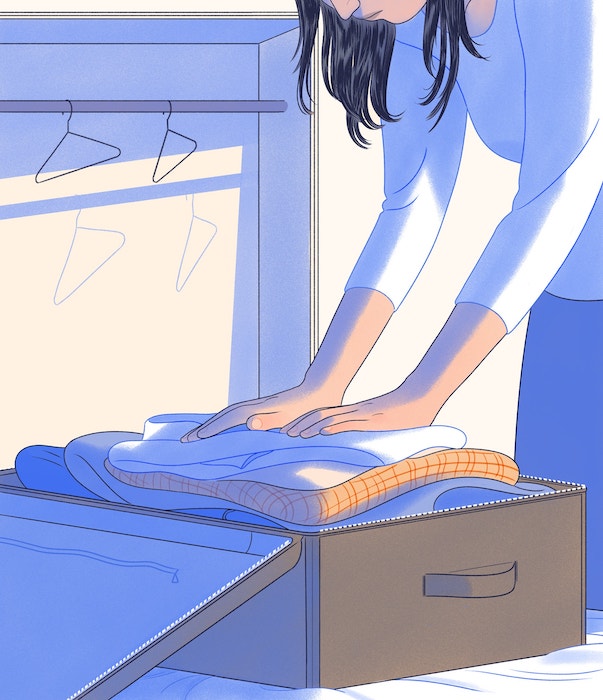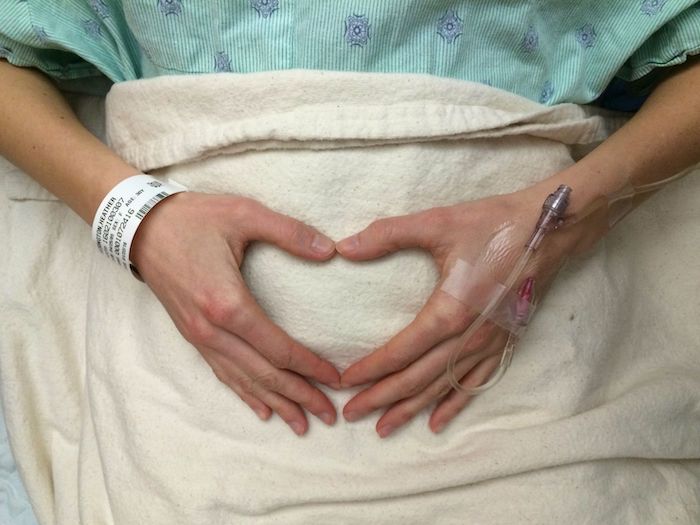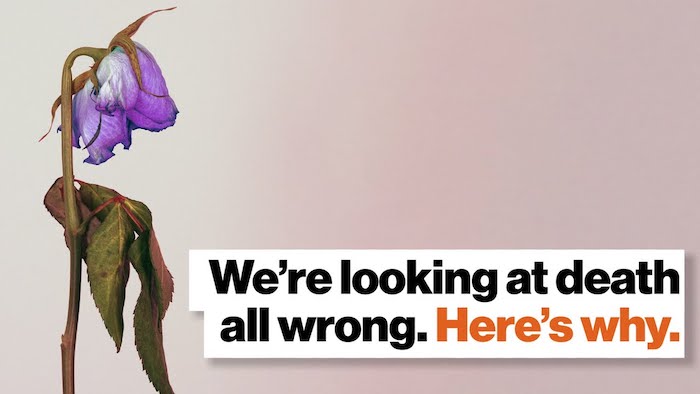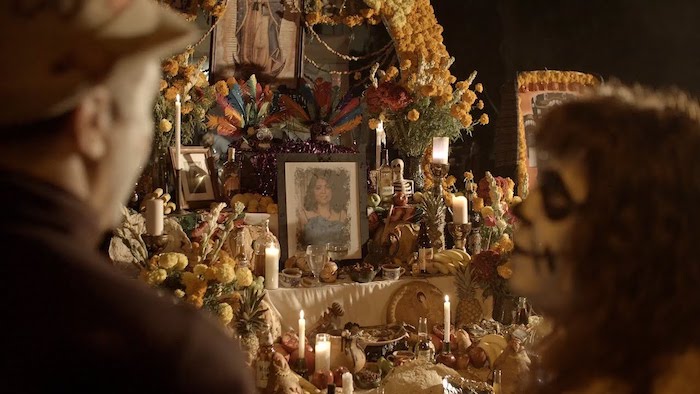The professionals who guide dying people

Doulas are tasked with maintaining a sense of calm for dying people and those around them, and opening the conversation about death and loss, topics that can often be taboo
In October of 2016, Gregory Gelhorn ran the Twin Cities Marathon. Seven months later, he was diagnosed with ALS, a progressive neurodegenerative disease that causes nerve cells to break down, resulting in muscle weakness and atrophy. The average life expectancy of an ALS patient, once diagnosed, ranges from about two to five years. The cause of ALS is not fully understood, and no cure is known. Gelhorn was in his mid-40s.
“It was a shock,” said Kathy Fessler, Gelhorn’s sister. “He was always the one who took the best care of himself.”
Dying from ALS is a singularly awful experience; the disease causes the body to progressively deteriorate while the mind remains clear and lucid. Gelhorn had loved being active. He had played three sports in high school, coached girls’ basketball and served as a travel director at Lakeville North high school in Lakeville, Minnesota. The disease progressed rapidly; soon, he was using a wheelchair and relied on a BiPAP machine to breathe. Doctors estimated he only had a few months left. Gelhorn and his family – his two teenage children, wife, parents, and siblings – began to grieve.
In the midst of it all, Fessler happened to see an article in the Star Tribune about Christy Marek, a certified end-of-life doula who lived only a few miles away. Fessler contacted Marek, who soon took on Gelhorn as a patient.
A doula, typically, is a professional who helps mothers during pregnancy and childbirth. Unlike midwives, doulas do not serve in a medical capacity; rather, their primary role is to provide emotional, physical and psychological support.
The practice originated in the natural childbirth movement in the US in the 1970s, alongside the Lamaze method and the popularity of alternatives to hospital birth, like water birth and home birth. That same generation of Americans who were having children in the 70s are now approaching their twilight years, and the practice of serving as a doula has expanded in scope. End-of-life doulas use the same concept as birth doulas: they provide support for the dying.
“On all sorts of levels, I think the Baby Boomers, that generation has just been here to shake things up,” said Marek. “The natural birthing movement, they did that. And now it’s the same thing. They’re saying, no, I don’t want the death my parents had. We are rich in possibility, why can’t I make this whatever I want it to be?”
End-of-life doulas are sometimes called death doulas, though many have reservations about the term.
“To me, end-of-life is a process,” said Marek. “The work I do with people isn’t just about that one point in time when somebody dies.”
Although doulas are not required to have medical training, many come from the healthcare field. Shelby Kirillin, an end-of-life doula based in Richmond, Virginia, has also been a neurointensive trauma nurse for over 20 years. It was her experiences in the neuro-ICU that led her towards becoming a doula. Many of the deaths she had seen there, she explained, struck her as cold, sterile and lonely.
“I just couldn’t imagine that the person dying had ever envisioned their death to be like that,” she said. “Dying isn’t just medical. It’s spiritual.”
Fascinated by the idea of a structured approach to end-of-life care that prioritized the individual wishes of the dying, Kirillin enrolled in a doula training course with the International End of Life Doula Association (Inelda), a not-for-profit that promotes the approach. Although there is no centralized regulatory body for doulas, training and certification programs are offered by a number of organizations, including Inelda and the Larner College of Medicine at the University of Vermont.
“There’s so much fear and anxiety about death,” said Janie Rakow, the president of Inelda. “The doulas are there to calm everyone down. They work with the dying and their families to educate, to explain what’s happening. That what they’re seeing is part of the dying process.”
Rakow and her business partner, hospice social worker Henry Fersko-Weiss, founded Inelda in 2015 to train doulas and promote their use in hospices, hospitals, prisons and homeless shelters. Their training program covers topics like vigil planning, active listening and doula self-care.
Part of what doulas do is open the conversation about death and loss, topics that can often be taboo or deeply uncomfortable for the dying or their family.
“Can you imagine if a woman was going through labor and no one around her was talking about it or preparing for it? There’d be an uproar if we treated birth like we treat death,” said Kirillin. “You have to talk about it. You’re dying and you’re no longer going to be here.”
Doulas help their patients plan out their deaths: talking with them about their wishes, and how they would like to spend their last day. Some prefer to die in a hospital, others at home. They decide who they want around them, whether it’s with all their family and friends, or a religious figure, or alone. They choose the details of the setting, whether they want to hear music, whether they want to have someone hold their hand, and what rituals – religious or secular – they want performed.
Doulas often also perform legacy work, the practice of guiding the dying to create tangible artifacts to leave behind for their loved ones. Sometimes, it’s a photo album, a collection of recipes, or a video archive. One of Rakow’s patients wrote a series of letters to her pregnant daughter’s unborn child, expressing her hopes and wishes for a granddaughter she knew she would never meet.
As death approaches, doulas are tasked with maintaining a sense of calm for dying people and those around them.
“One of my patients this past spring, as he was transitioning, he started to vomit,” said Kirillin. “I reminded everyone that when a woman is laboring a birth, sometimes she vomits. It’s the body’s natural way. Let’s just make him comfortable.”
Finally, the last part of a doula’s work comes a few weeks afterwards, when the doula meets with the deceased’s loved ones to reprocess and discuss everything that has occurred.
“It’s after the casserole brigade has come and gone, and everyone’s gone back to work,” Kirillin said. “We talk about grief and bereavement. You’re not going crazy. You can be happy and sad in the same moment. There is no timeline.”
Of course, the practice of guiding the dying on their final journey is not new. Death is not an unknown phenomenon, and the act of tending to the dying has existed as long as human civilization itself. Marek has a theory for why the need for a formalized approach to death has manifested now, in these particular circumstances – why the dying feel the need to contract a trained professional, rather than being able to rely on a more organic source of support.
“In America, a few generations ago, our communities were doing this work,” she said. “The reason the role is showing up in a formalized way now is that we don’t have those community ties any more, not in the same way, and certainly not the same level of responsibility to each other as used to be woven into our communities.”
Kirillin agreed: “I would love for our culture to never need me,” she said.
Much of doula work is the very definition of emotional labor, and though Janie Rakow suspects some doulas feel conflicted about taking money for their services, she sees the profession as no different from that of therapists or hospice workers.
“I had one of my patients tell me I wasn’t charging them enough,” she said, though Inelda also encourages pro bono work, and many doulas serve purely on a volunteer basis. She also cautions her doulas not to take on too many cases in a row, and to be cognizant of their own mental health. But, she said, the act of tending to the dying is not as depressing as many assume; rather, it can be very rewarding.
“When you sit with a dying person and they take their last breath, it is as amazing and awe-inspiring as someone taking their first,” said Kirillin. “It is important, and sad, and needs to be cherished.”
Gregory Gelhorn died in September 2018. He spent his last day in his home, surrounded by his family. Together, they watched a movie and listened to 90s prog-rock.
Complete Article ↪HERE↩!






